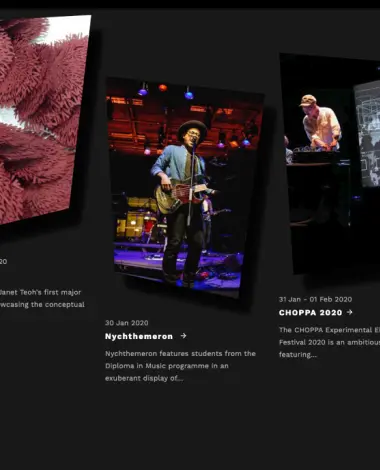In today’s fast-paced world, on-the-go shoppers are increasingly turning to their mobile devices to make purchases conveniently while juggling busy schedules. They may utilise mobile shopping apps, mobile-friendly websites, or platforms that offer quick and easy purchasing options.
Recent statistics indicate a clear trend: an exponential rise in mobile shopping, underscoring the need for targeted design tweaks to capture the attention of on-the-go shoppers.
Mobile Shopping Growth: According to Statista, global mobile commerce sales amounted to 5.8 trillion U.S. dollars in 2023, and it is projected to reach 8 trillion U.S. dollars by 2027.
Mobile Traffic vs. Desktop Traffic: Shopify, a leading e-commerce platform, reported that in 2020, 81% of traffic and 71% of orders from their platform came from mobile devices.
Shopping App Usage: The popularity of shopping apps continues to grow, with many consumers preferring the convenience and personalised experience they offer. Data from App Annie, a mobile data and analytics platform, shows that time spent in shopping apps increased by 30% year-over-year in 2020.
Consumer Behaviour Shift: Consumer behaviour has been shifting towards mobile shopping, especially among younger demographics. Studies have shown that millennials and Gen Z consumers are more likely to use mobile devices to browse and purchase products than older generations.
Identifying these shoppers usually involves analysing data related to device usage, browsing habits, and purchase patterns across various online platforms. Major e-commerce companies often conduct market research to better understand the behaviour and preferences of on-the-go shoppers to tailor their services accordingly.
While standard features for mobile shopping provide a solid foundation, implementing specific tweaks can further enhance the shopping experience and capture the attention of these mobile consumers. Below, we explore key design strategies and features tailored to cater to the unique needs of on-the-go shoppers, ensuring a seamless and engaging mobile shopping experience.
In mobile e-commerce, foundational features such as secure checkout and account creation lay a sturdy groundwork. However, strategic tweaks amplify user experience, captivating on-the-go shoppers with tailored design strategies. When it comes to e-commerce best practices, prioritising aspects that enhance user experience, security, and sales is crucial.
Now, let’s explore some of the proven design strategies and refinements. The importance of each element may vary depending on your specific business context and target audience.
Essential elements for successful e-commerce
Let’s take a look at the immediate necessities for running a successful e-commerce operation (Must Haves):
Streamlined Navigation: Simplify navigation by minimising the number of taps required to browse products and complete purchases. Implement intuitive menus, clear categories, and prominent search functionality to help users find what they’re looking for quickly.
A recent survey found that most generations rank Amazon’s user experience (UX) as the most appealing. Of those surveyed, Amazon’s UX ranks highest among baby boomers (29%) and Generation X (21%).
Visual Hierarchy: Prioritise important information and actions by using visual hierarchy techniques such as size, colour, and placement to guide users’ attention effectively on smaller screens.
Clickable CTAs and Buttons: Design clear and prominent calls-to-action (CTAs) and buttons that are easy to click on small touch screens. Use contrasting colours and ample spacing to make them stand out.
One-Click Purchases: Implement one-click purchasing options or saved payment methods to streamline the checkout process. Allow users to complete transactions without having to enter their payment and shipping details every time.
Fast Loading Times: Mobile users expect fast loading times. Optimise images, minimise HTTP requests and leverage caching techniques to ensure that pages load quickly even on slower mobile networks.
Social Proof and Reviews: Incorporate user-generated content such as reviews, ratings, and testimonials to build trust and credibility. Highlighting positive feedback and social proof can help reassure on-the-go shoppers about their purchasing decisions.
For example, let’s look at how Fitbit uses social reviews to add to its success. The prominence of quality outcomes is evident in the “Buzz” section.
This significantly bolsters Fitbit’s achievements, as numerous publications follow suit. Consequently, Fitbit has emerged as the foremost and most renowned fitness tracker company globally.
Optional enhancements for improved customer experience
Additional features that can enhance the overall customer experience but may not be as crucial for initial success (Good to Have):
Geolocation Services: Use geolocation technology to provide location-based offers, promotions, or store locator features that are relevant to on-the-go shoppers.
Progressive Web Apps (PWAs): Consider developing a PWA that combines a website’s benefits and a native app. PWAs offer offline access, push notifications, and app-like experiences without requiring users to download and install an app from an app store.
Some e-commerce companies that are leveraging PWAs to provide users with fast, reliable, and engaging shopping experiences are Lancôme, AliExpress, West Elm, The Washington Post Store and Flipkart which offer features such as smooth animations, add-to-home screen functionality, and seamless checkout, resulting in increased user retention and sales.
AliExpress’s PWA allows users to browse products, add them to the cart, and make purchases even with a poor internet connection.
Emerging elements for evolving future needs
Elements that are poised to become more critical as technology and consumer behaviour evolve (Future-Oriented):
Voice Search Integration: Enable voice search functionality to allow users to search for products using voice commands, which can be especially useful for on-the-go shoppers who prefer hands-free interactions. Mobile commerce entities like Amazon, Walmart, eBay and many others offer voice search functionality, allowing users to search for items using voice commands.
Visual Product Search: Integrate visual search functionality that allows users to upload images or take photos of products they’re interested in and find similar items in your inventory. Some of the e-commerce businesses that are leveraging visual product search and streamlining the product discovery process for users include Amazon where customers can snap a photo of a tangible object, which can then be utilised as a search query to discover comparable products.
Seamless Cross-Device Experience: Ensure a seamless experience across different devices by implementing features like automatic sync of shopping carts and user preferences across mobile devices and desktops.
Personalised Recommendations: Utilise data analytics and machine learning algorithms to provide personalised product recommendations based on users’ browsing and purchase history. Tailoring recommendations to individual preferences can enhance the shopping experience and increase conversion rates.
For example, Netflix’s personalised recommendation system analyses users’ viewing history, ratings, and preferences to suggest content that aligns with their interests, leading to increased user engagement and retention. Similarly, the leading cosmetics and beauty retailer Sephora utilises personalised recommendations to suggest skincare products, makeup items, and fragrances based on users’ past purchases, browsing behaviour, and beauty profiles.
Conclusion
By implementing these design tweaks and features, you can create a mobile shopping experience that caters specifically to the needs and preferences of on-the-go shoppers, ultimately improving user satisfaction and driving conversions.
If you are looking for perfectly crafted digital experiences for your customers that truly reflect your brand, product, or service, connect with us now.
Table of Contents












